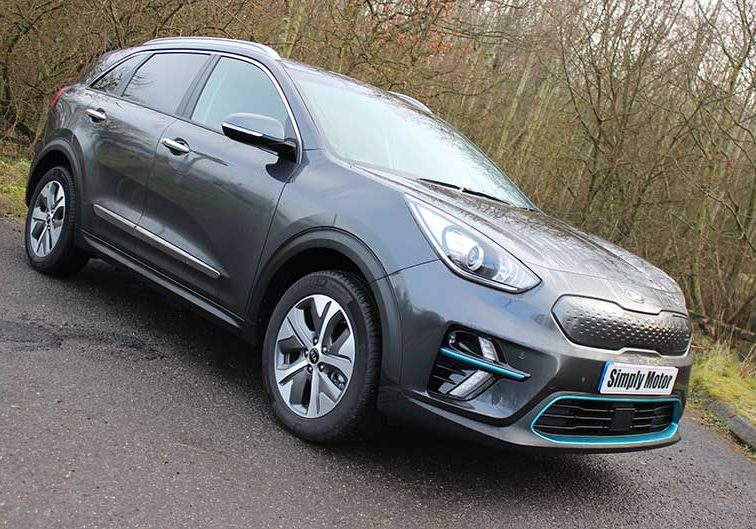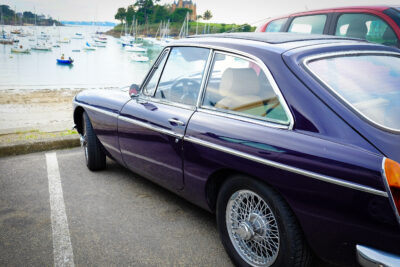
An All Electric Car For The Masses? The Kia e-Niro could be the answer.
by Northern Life
Since the Government has committed to decidedly ambitious plans to end the sale of new petrol and diesel cars by 2030, it is about time we started thinking properly about alternatives. I get asked quite regularly what it will take to make electric cars appeal to the masses. Notwithstanding the infrastructure challenges – which, by the way, are colossal – the cars themselves need to become more ‘mainstream’. When asked to quantify this, I say that a family car needs a range of at least 300 miles, at a price around £30,000.



The Kia e-Niro represents a major step towards an electric vehicle future. It doesn’t quite meet my criteria above: the ‘2’ model costs £29,845 but comes with a range of 180 miles. The ‘3’ and ‘4+’ models both have a range of 282 miles, but cost £34,100 and £36,395 respectively. All of these prices are after the Plug-in Car Grant (PiCG) of £3,000.
“Don’t think these pure-electric cars are slow and boring: the Kia e-Niro will go from 0-62mph in 7.5 seconds and reach a top speed of 104mph.”
The model I tested was the higher-range model. It has a 64kWh battery to provide the 282 mile range, which powers a permanent magnet synchronous motor. Power is 201PS, with 395Nm of torque. More impressively, that maximum torque is available from 0-3,600rpm, and it’s this instant acceleration off the line which give EVs an air of excitement. Don’t think these pure-electric cars are slow and boring: the Kia e-Niro will go from 0-62mph in 7.5 seconds and reach a top speed of 104mph.
Handling isn’t too bad either. You can tell the e-Niro is carrying the extra weight of the batteries: it weighs in at a hefty 1,812kg, some 322kg more than the Niro self-charging hybrid. But because the weight of the batteries sits low down under the floor, it doesn’t detriment the balance of the car. It is relatively flat through the corners, and with instantaneous acceleration to hurl you out the other side, the e-Niro can be a pretty fun car to drive.
In terms of charging, the 64kWh batteries can be charged using the DC rapid charge network. Using a 50kW charger will allow you to top up from 0-80% battery in an impressive 57 minutes. At home, you have the option of a 230V or 7.2kW chargers, which provide 0-100% charge in 18 hours and 9 hours 30 minutes respectively. The ‘4+’ grade can also make use of an 11.5kW 3-phase charger, capable of charging from 0-100% in just 7 hours.
So here we have a fully electric vehicle that can be fully charged overnight, at home. And the practicalities of life with the Kia e-Niro don’t end there. Where the self-charging and plug-in hybrid models have somewhat-limited boot space, the e-Niro boasts a rather generous 451 litres. More than enough for the weekly shop, and able to swallow several suitcases for when holidays are actually possible again.




And don’t think that Kia has been stingy with the gadgetry to maximise range. The ‘4+’ grade comes with the array of equipment we’ve come to expect of Kia, including electrically-adjustable driver’s seat with memory function, heated and cooled front seats, heated steering wheel and heated outer rear seats. There’s a 10.25-inch touchscreen multimedia system with 8-speaker JBL premium sound system, satellite navigation, DAB digital radio, Apple CarPlay, Android Auto and voice control.
All e-Niro models boast a 5-star Euro NCAP safety rating, with forward collision-avoidance system, lane-keep assist system and lane follow assist as standard. The range-topping ‘4+’ grade also gets intelligent speed limit warning and blind-spot monitoring with rear-cross traffic alert.
All Niro models feature some form of electrification, so Kia has avoided the seeming need to make the eco model stand out, with lurid colours or wacky – and often tacky – design features. And if we someday hope for electric vehicles to become the norm, this is a key factor. When I say the e-Niro looks like a ‘normal car’, that is meant as a compliment. It goes about its business without making a song and dance. It doesn’t shout for attention, and as a result it can integrate seamlessly into your life.
It’s the same story inside too. There are no door handles made of recycled coffee cups, or space-age hologram displays. There are leather seats, a conventional dashboard layout and the high standard of build quality expected of Kia.



“There are leather seats, a conventional dashboard layout and the high standard of build quality expected of Kia.”
The Kia e-Niro is a very compelling vehicle. The range is more than enough for our day-to-day use, it’s a fun car to drive, and comes with all the creature comforts you could possibly want. Admittedly the ‘4+’ model – at £36,395 after PiCG – is not exactly what you’d call cheap. It does, however, come with the usual 7-year, 100,000-mile Kia warranty, which gives confidence in the EV powertrain.
Crucially though, the charging infrastructure in our local area is poor. I suspect that there will be many areas across the country where people feel this way. And that is going to be one of the major challenges in the next 5 years – to overhaul and enhance this infrastructure in order to convince us all that electric cars really are the future.




